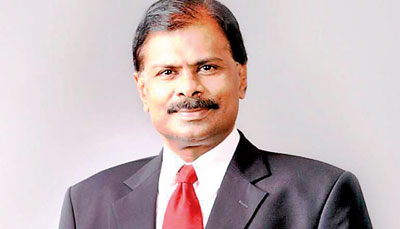Tribute to the ever-loving Sri Lankan Guru of Marketing
View(s): A fellow invitee asked, “At which capacity are you invited here?” as they were seated in the PIM auditorium’s rear among the elite invitees. My first response was that I was the former president of the PIM Alumni Association. It didn’t take me long to rectify myself, though. Since my mentor taught marketing and served as the supervisor of my final thesis on branding, I was actually sitting there for him. I then said, “He’s lucky… he had his best and left before the pandemic even though it was too soon for us,” to one of the other past presidents seated next to me. I recall the final strategic session he conducted for us at PIM and the final group presentation we gave him during that session. On corporate culture, that is. A rowing team and a rafting team were the two images I chose for my slides to demonstrate the differences between two cultures in two distinct environments and to illustrate the idea that while an organisation’s culture directly affects its outcomes, the environment in which it operates also has an impact on how culture is formed. I can still hear him saying, “This is something interesting. Let me study this more and give my thoughts on this,” as he reflected deeply on my presentations. But I don’t think he could go back.
A fellow invitee asked, “At which capacity are you invited here?” as they were seated in the PIM auditorium’s rear among the elite invitees. My first response was that I was the former president of the PIM Alumni Association. It didn’t take me long to rectify myself, though. Since my mentor taught marketing and served as the supervisor of my final thesis on branding, I was actually sitting there for him. I then said, “He’s lucky… he had his best and left before the pandemic even though it was too soon for us,” to one of the other past presidents seated next to me. I recall the final strategic session he conducted for us at PIM and the final group presentation we gave him during that session. On corporate culture, that is. A rowing team and a rafting team were the two images I chose for my slides to demonstrate the differences between two cultures in two distinct environments and to illustrate the idea that while an organisation’s culture directly affects its outcomes, the environment in which it operates also has an impact on how culture is formed. I can still hear him saying, “This is something interesting. Let me study this more and give my thoughts on this,” as he reflected deeply on my presentations. But I don’t think he could go back.
However, among the many things he left behind, I still use one in my branding lectures, and I figured the framework SLIM Brand Excellence uses to judge contestants and choose the best performing brands would be the best thing I could share with my readers today who have been following me for the past three years.
The four pillars he believed to be the building blocks of the brand plan are brand intent, brand content, brand process, and brand performance. The first three of the four make up the brand’s drivers, with the fourth serving as the brand’s final product. One of the best ideas he presented, among many others, was the distinction between brands that are bolt-on and brands that are built-in. He was referring to the fact that some brands are created by advertisements while the brand marketer neglects to do his job with the product. When a customer actually utilises the goods, it falls short of the standard that was implied by the product’s advertisement. This brings us to the performance aspect, which is brand loyalty.
Four constructs of the brand plan – by Late Professor Uditha Liyanage
Brand Intent – This emphasises the brand’s core raison d’être or reason for existing. The proprietors of the brand must explain the rationale behind its existence. What the customers would lose, in other terms, if the brand disappeared. If the brand didn’t exist, there should be a gap in the market that another brand couldn’t fill. In addition, it includes the brand’s vision, mission, goals, and objectives. While the vision has a much longer time horizon and is more expansive than the others, the objectives are expressed as quantifiable results such as:
2 Vs – Volume and Value targets
2 Rs – Reach in outlets and reach in households
Share – Mind share, Wallet share, market share etc.
 Brand Content – The STPP of the brand as I have shared in my previous articles; Segmentation, targeting, profiling and positioning of the brand conventionally known as STP. This would also include; POPs and PODs (Points of Parity) and (Point of difference) which is crucial in brand positioning, includes, brand positioning map and the positioning statement.
Brand Content – The STPP of the brand as I have shared in my previous articles; Segmentation, targeting, profiling and positioning of the brand conventionally known as STP. This would also include; POPs and PODs (Points of Parity) and (Point of difference) which is crucial in brand positioning, includes, brand positioning map and the positioning statement.
Brand Process – The execution of the above two will be through the four tactics, famously known as 4Ps or if it’s services marketing 7ps or the extended marketing mix. (Product, Price, Place, Promotion, People, Processes, Physical Evidence).
Brand Performances – outcome of the whole process is summed up here. It’s always easy to measure the outcome against the objectives set at the beginning of the process. They are expected to be verified with market research and consumer research. For instance, the measuring of market share will be a function of both the household panel and the retail panel.
This was written with today’s young marketers who are joining the fraternity in my mind. You wouldn’t be familiar with Professor Liyanage. But sooner or later in your profession, you would undoubtedly come across his name. I feel privileged and humbled to have had the opportunity to learn from him and be a student under his direct supervision. But I wish he had lived longer so that more people might have appreciated what he was brilliant at. May this serve as a monument to the modern-day marketing genius! Allow me to dedicate this piece to Mrs. Liyanage, Ms. Chathuri Liyanage and her family as well. I must also be thankful to the Mr. Eardley Perera who took the initiative in crafting the biennial oration along with the senior professor Ajantha Dharmasiri who succeeded late professor Liyanage as the former director of PIM. Finally, I salute my friends from CIM-Sri Lanka, SLIM and PIM Alumni and the Director PIM and his staff for making it all possible this time too to pay our gratitude to late Professor Liyanage.
HitAd.lk is the best and biggest mobile phone market in Sri Lanka, and we guarantee you will find what you need here from our extensive listing of mobile phones for sale in Sri Lanka. Whether it’s a budget-priced smartphone for communication, or higher end features with advanced connectivity, there are many different options from which to choose from on our site!


